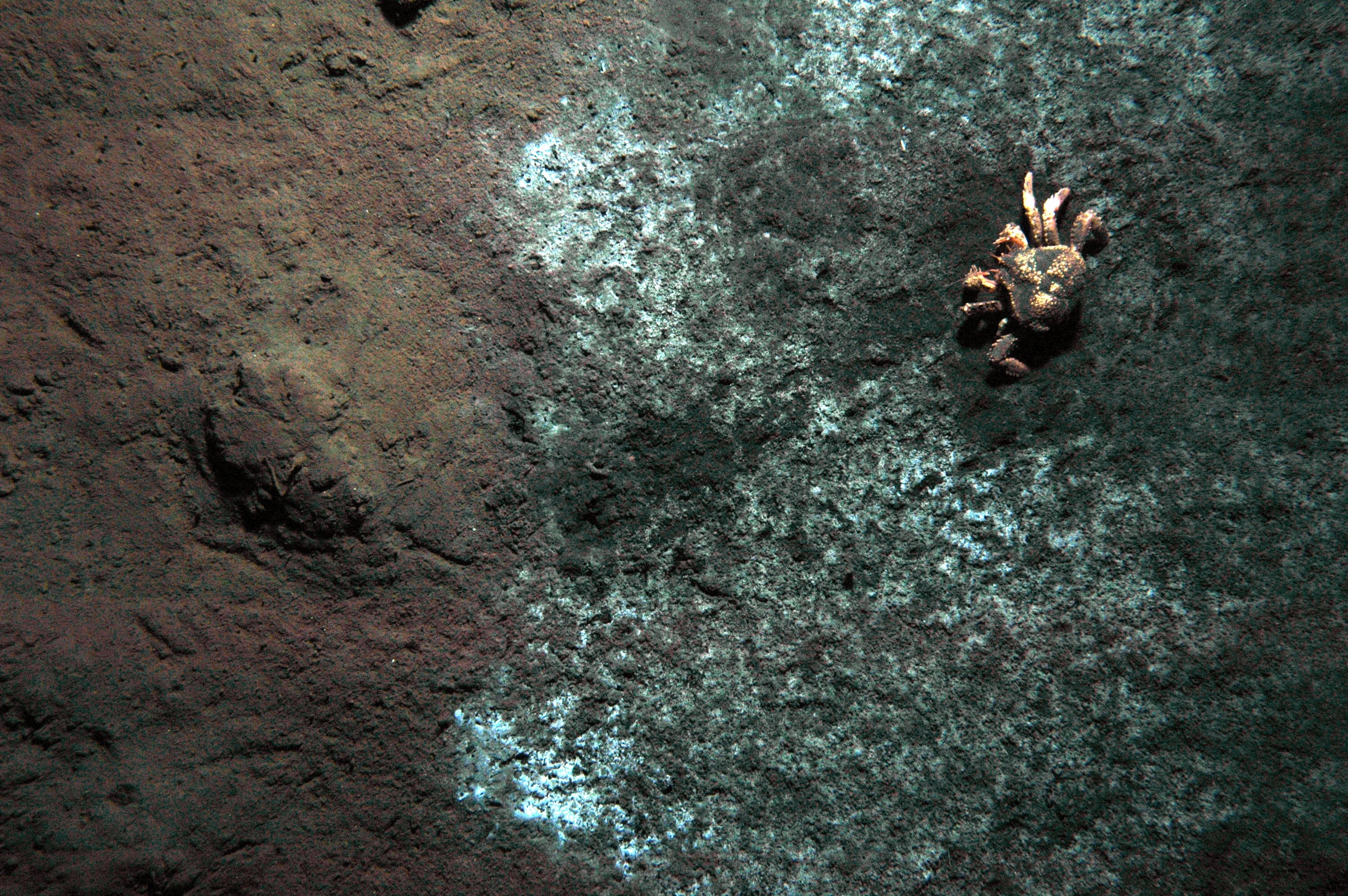Bacteria-Eating Crabs Call Seafloor Mud Volcano Home

A bacterial mat sounds like the festering remains of a long-ago meal, not the main course. But crabs living on a methane-spewing mud volcano were recently spotted munching on a tangled, filmy web of bacteria, providing new evidence that the deep-sea creatures rely on a mixed diet.
Researchers report today (Oct. 7) in the journal PLOS ONE that lithodid crabs, part of the lumpy, bumpy family that includes the Alaskan king crab, repeatedly snacked on bacteria offshore of Costa Rica in 2005. "As far as we know, deep-sea crabs feeding on bacterial mats were discovered only one single time before," study co-author Peter Linke, a senior scientist at the GEOMAR Helmholtz Centre for Ocean Research Kiel in Germany, said in a statement.
The crabs grazed like deer on a lawn, leaving and returning after a few hours, once the bacteria had a chance to regrow, the researchers report.
And at least one crab enjoyed nibbling on several food sources.
Plucked out of the deep ocean by the remotely operated vehicle Alvin and brought to the surface, this lithodid crab's stomach and muscles contained carbon from two different sources. One was the methane-chomping bacteria, and the other was photosynthetic, or influenced by sunlight. (The ratio of carbon isotopes — atoms with different numbers of neutrons — differs depending on the source.) The discovery suggests the crab was snatching food descending from the surface, such as the dead sea squirt colony (tunicates) that fell to seafloor during the study. With remote cameras, the researchers watched the crabs feast on the tunicates.
"[W]e assume that cold seeps make an important but not the only contribution to the diet of migratory animals on the ocean floor," said Helge Niemann, lead study author and a marine biologist from the University of Basel in Switzerland.
Ocean expeditions have previously spotted lithodid crabs cracking mussels open at methane seeps. A unique crab called the Yeti "farms" bacteria on its arms by waving them in methane and sulfide gas streaming from the seafloor. [Gallery: Unique Life at Antarctic Deep-Sea Vents]
Get the world’s most fascinating discoveries delivered straight to your inbox.
Known as "cold seeps," methane seeps such as the ones near Costa Rica's mud volcanoes create an ecosystem based on chemicals instead of sunlight. Methane- and sulfate-eating bacteria are the foundation of this food chain, supporting shellfish, shrimp, sea cucumbers and crabs, among other marine life.
Email Becky Oskin or follow her @beckyoskin. Follow us @livescience, Facebook & Google+. Original article on LiveScience.

